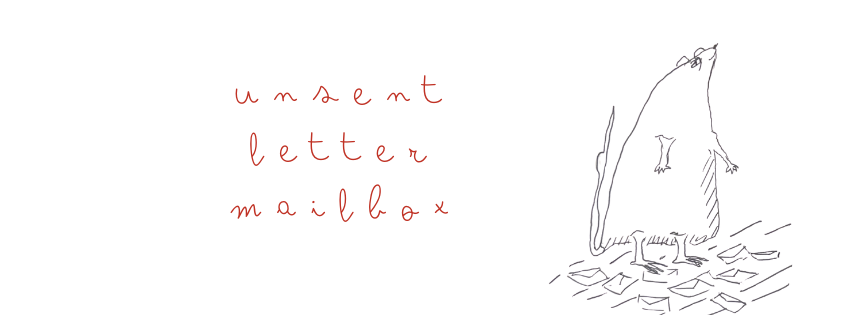What is an unsent letter?
What Is an Unsent Letter?
You’ve likely written one before — in your Notes app, in a journal, maybe scratched onto a napkin with no intention of sending it. A confession that didn’t quite fit into the world of follow-through. An unmailed draft. An emotional placeholder.
That’s an unsent letter.
Not a mistake, a method. A pause in the cycle of performance that allows you to take a deep breath and check in with your emotions.
It’s not a new idea. People have long scribbled what they couldn't say aloud. But today, unsent letters carry new weight. They are resistance against algorithmic oversharing. They are soft refusal in a world that rewards efficiency, immediacy, completion and clarity.
To write an unsent letter is to let a thought live without demand. It is where expression isn't followed by expectation — no response required, no likes to count.
Why Do People Write Unsent Letters?
In a time where we’re taught to brand our grief, style our rage, or turn every revelation into a reel — unsent letters offer privacy in public. An anonymous breathing room against the constant pressure of a life mediated through a 9:16 aspect ratio.
At The Unsent Letter Mailbox, we’ve received over a thousand anonymous letters. Some are loving. Others are livid. Many arrive confused, asking questions without punctuation.
But a common thread runs through them all:
They weren’t meant to be published. They were meant to be released.
That moment of pause, when someone writes a letter they may never send, is the moment they get to hear themselves think.
The Psychology of Unsent Letters
Psychologist Ira Progoff developed the “Intensive Journal Method” in the 1970s — encouraging people to write letters they never intended to send as a tool for self-exploration. Grief counselors today still encourage it as a form of narrative release, also referred to as narrative therapy.
In our own urban vernacular, the unsent letter is the dissonant aftermath after an incomplete life event, a lack of closure. It’s what we mutter in the shower. It’s the message typed and deleted — the one that almost made it through.
And sometimes, that’s the truest version of what we feel.
Letters from the Archive
“To my former personalities, I made peace with it.”
— Anonymous, Unsent Letter Mailbox
Some of our most powerful unsent letters come from people reckoning with fractured identities — not as pathology, but as poetic multiplicity. One such letter, submitted anonymously, reads like a quiet triumph over Dissociative Identity Disorder. It doesn’t dramatize or perform. It just witnesses.
Where the world might say “choose one version of yourself,” the unsent letter says,
stay with the tension. Voice the complexity. There’s space to hold the whole of who you are.
Why We Collect Them
Because a letter that isn’t sent is still real.
Because the unsaid is still alive.
Because a mailbox without an address can still carry weight.
At The Unsent Letter Mailbox, every stranger who stops to write an unsent letter gets to read one in return. It’s a gentle barter — your unspoken for someone else’s.
And maybe that’s the point:
We don’t always need to be heard to feel understood.
